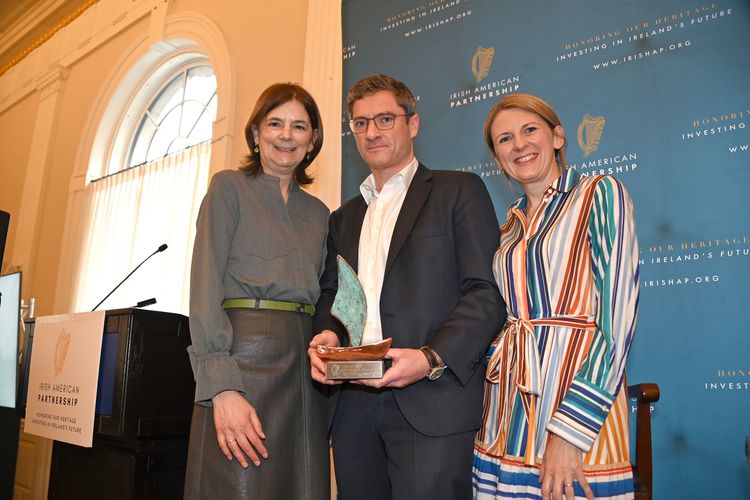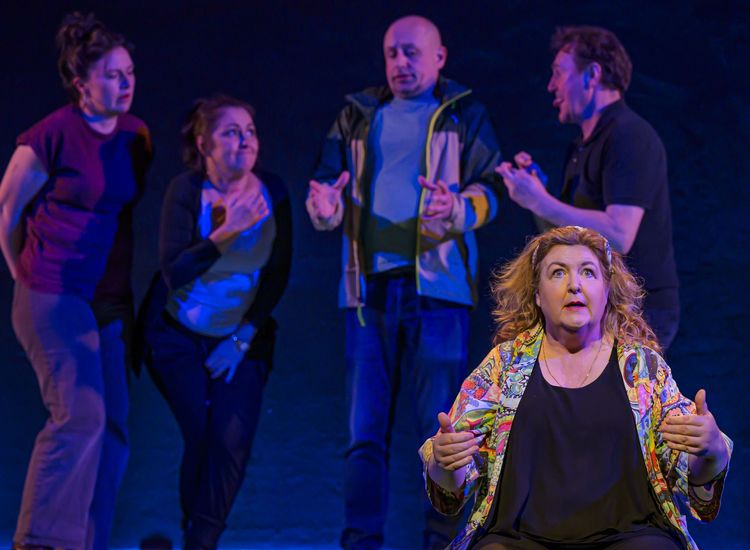Irish-American singer Cathie Ryan.
By Colleen Taylor
Who is David Mallamud and what does he have to do with Irish music? The answer is: an American composer and a great deal. His interests are as eclectic as the tracks of his recently released debut album, “The Wild and Whimsical Worlds of David Mallamud.” A cosmopolitan composer, Mallamud traverses time and space in his compositions. You might call him the Rick Steves of music—the expert guide of your Grand European Musical Tour. His debut record makes many time-traversing stops: Paris music halls, Latin telenovas, 1980s rock concerts, Victorian parlors, and most importantly for our purposes, the 19th-century Irish coast. After touring the Continent, Mallamud takes a trip in a currach, exploring the spirit of Irish sea shanties, with Irish-American singer Cathie Ryan as his captain. For David Mallamud, who earned his credentials at none other than Julliard, music is meant to be as cosmopolitan as it should be culturally sincere.
Mallamud’s Irish set, “Immram,” marks the centerpiece of his album. The grand musical tour pivots on this mystical, ancient set-piece, sung by the gorgeous, haunting vocals of Ryan, and executed by the uileann pipes of musician Dan Webb. If we think of his whirlwind album as a kind of tour, it becomes interesting and significant that this original Irish air follows a set of songs from the English Victorian era. I think it’s to Mallamud’s credit that he gives a pluralist, postcolonial version of musical history. “Immram” is like the dark, Gothic shadow behind the 19th-century English parlor. But there’s hope in “Immram” composition too: after Ryan’s vocals softly drift in through misty, haunting atmosphere, Webb’s pipes along a chorus of new age voices take Mallamud’s composition to a hopeful plateau.
I bring up Mallamud’s recent release to highlight what is in fact an important pattern in traditional, classical and folk music since the 1970s and 1980s. Mallamud’s album, although unique to his own vision and imagination, is not really an original idea. Rather, he is following in the footsteps of a creative path forged (at least in our modern era) by the Chieftains. We can safely attribute credit to the Chieftains for building the bridge between traditional Irish music and classical, pop, Latina, vaudeville, or any other musical genre under the sun. Headed by Paddy Moloney, the band formulated the idea of a no-borders musical community, using their time in the Grammy-winner spotlight throughout the 1980s to invite more and more people in. What the Chieftains did on a global scale was showcase that Irish music’s mysteries and histories could be creative dynamite for anyone willing to light the spark. Mallamud marks a place in a long line of non-Irish musicians who have been drawn to Ireland’s musical shore. Gallician composer Antoni Bresky, Ukranian-Ameircan Celtic rock band Scythian, are just a couple musicians who have told me personally how the Chieftains drew them into an Irish musical society they might have felt barred from otherwise.
As listeners, we can learn a lot about our own culture and music from a composer like Mallamud or a group like Scythian. Indeed, the outsiders’ perspective has a sixth sense for pinpointing the character and allure of an indigenous music. What Mallamud’s beautiful “Immram” shows me is how the Irish genre captures the fantastic that border between the real and the magical. Ireland marks a specific territory in a global, cosmopolitan cultural mindset where mystery and emotion are preserved in a non-verbal, inexplicable chorus of sounds.










